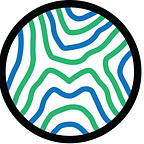Coral Reef Rescue Portal — How team Coraladies plans to save corals
The following article covers the work of team Coraladies, the winners of the third Mothership Mission titled The Big Blue. For more info on the program visit the website.
Coral reefs are an essential part of the marine ecosystems. They are vital to maintaining marine biodiversity, and they provide environmental services to humans, as well as supporting local economies through tourism and fish stocks. Unfortunately, as with many other habitats, human activities are threatening their existence. From physical damage to the reefs, through heat stress from rising water temperatures to bleaching from suspended sediment, corals face many challenges to their survival.
In order to give them a fighting chance, organizations such as Raising Coral Costa Rica propagate the more resistant coral species in nurseries before out-planting them on damaged reefs. The hope is that, by populating the reef with healthy individuals, some damage can be reversed, while the more resilient species will allow the reefs to survive future stresses.
The process of out-planting corals is time-consuming and labor-intensive in itself. That is why a large amount of work is put into selecting the optimal site for restoration work to guarantee its success. However, due to various changing factors, including but not limited to, location and intensity of suspended sedimentation in the coast, the chances of successful restoration may decrease. Understanding the trends and dynamics of the water and weather conditions is the first step towards discovering their impact on newly planted reefs. Unfortunately, the challenge owner does not have access to a comprehensive, unified, and objective data source and they often rely on local knowledge and historical information.
Our proposed long term solution is to describe the situation, predict the possible impacts, and prevent future loss by learning from past trends. We translate this solution into a web service where the user can have i) Easily accessible transparent Data; ii) Data-driven objective insights; iii) An interactive decision-support tool.
Our online platform, Coral Reef Rescue Portal, consists of a map display, a data panel that presents different layers of processed and fetched data, a selection panel where the user can select location and date, and a time series trend graph to demonstrate the changes of sedimentation through time. The processed data includes a classified and reclassified image of sedimentation and will be extended to include a map of chlorophyll algae, sea surface temperature, and turbidity. The relevant overlay data includes basemaps, weather data, precipitation data, and the location of coral reefs.
Before getting to the prototype, we spent a great deal of effort on establishing a processing chain starting with image acquisition and continuing with pre-processing and preparation, classification, batch processing, aggregation, and time series analysis. We experimented with several tools and algorithms before deciding on the optimal solutions. We used Sentinel 2 data, ranging from 2016 to 2020. This gave us about 130 images, with a maximum frequency of 1 image per 5 days. We selected images with less than 70% cloud coverage and then stacked the images to derive the statistics, during the aggregation.
The business model we have in mind relies on fortification by creating a strong reliable product, creating a market by teaming up with the challenge owner and applying for grants which will cover the costs of our service for added value, and monetizing by offering a Software as a Service model to other organizations with similar interest. Eventually we will increase our uptake by further stakeholder engagement and by expanding our domain to help protect other vulnerable landscapes and contributing to the United Nations’ Sustainable Development Goals (UN’s SDGs).
Coraladies is a passionate team consisting of two very eager and curious professional coders (our computer scientist and data scientist) a GIS/Remote sensing expert with a scientific approach towards the problem at hand, and an enthusiastic project manager with experience in both private and public sector in the Earth Observation domain. But Coral Reef Rescue Portal would not exist without the support from numerous organizations and individuals who have helped us and guided us throughout this mission.
We all share a vision of using technology and data-driven methods to tackle global challenges and make an impact. Together we will return coral to their homes.
Written By: Aileen Jiang, Angela Sindic, Parya Pasha, and Samantha Krawczyk
The Coraladies team won the prize for their challenge co-organized with Rising Corals Costa Rika as well as a spot on the Copernicus Accelerator.
The Mothership is an open innovation program helping teams to develop a proof of concept and business model for solutions related to the Sustainable Development Goals. The program is co-organized by AI Lab One, Space4Good, and WorldStartup.
